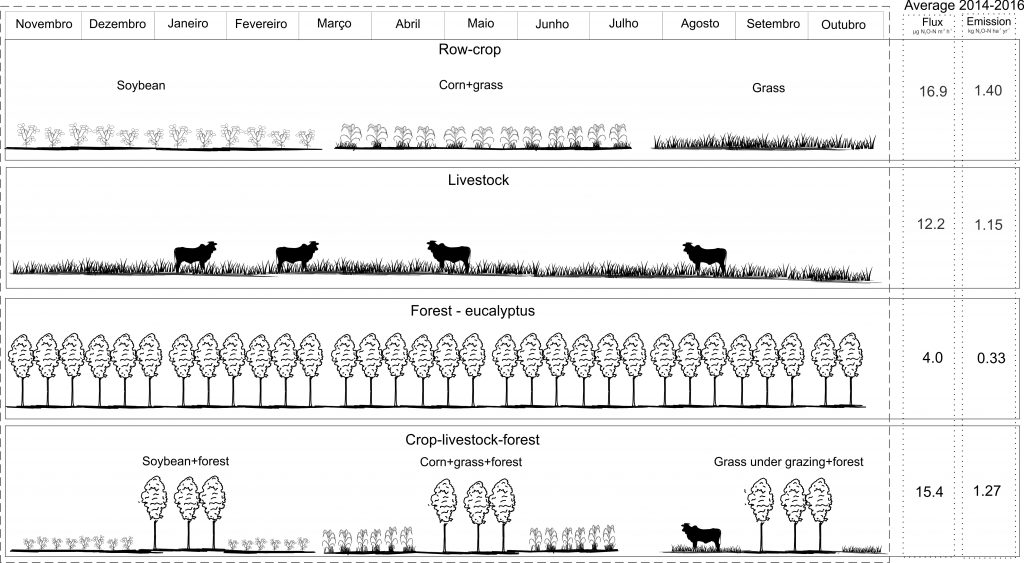Nitrous oxide emissions from a tropical Oxisol under monocultures and an integrated system in the Southern Amazon – Brazil
24/Apr/2020
ABSTRACT Although agriculture and livestock systems represent important sources of N2O from the soil, they may also aid in emissions mitigation, mainly when integrated systems are taken into account, such as crop-livestock-forest, for food production. This work assessed the soil N2O emissions from a tropical Oxisol under row-crop, livestock, forest monocultures, and an integrated crop-livestock-forest system in the Southern Amazon – Brazil. Soil N2O emissions were measured using static chambers from November 2014 to October 2016 in four soil use […]
Soil and phytosociological characterization of an area with predominance of arnica (Lychnophora pohlii sch. bip.)
01/Jun/2013
Lychnophora pohlii Sch. Bip. (Asteraceae), known as “Arnica mineira”, is widely used in folk medicine and very abundant in the altitude vegetation of rocky grassland. The aim of this work was to study the density of this species and its relationship with soil parameters in rocky grassland in Diamantina, in the Upper Jequitinhonha region, Minas Gerais. Ten contiguous 20 x 50 m plots were marked (total sampled area 10,000 m2) on the campus Juscelino Kubitschek of the Federal University of […]
Activity, carbon and nitrogen of microbial biomass in eucalypt plantations in an age sequence
01/Apr/2008
Microbial activity is highly relevant for nutrient cycling and soil fertility in forest plantations. Due to the long growth cycles, continuous litter production and dead roots contribute to storage and increase of soil organic matter. Changes in soil and litter microbial biomass and activity under 1, 3, 5 and 13-year-old eucalypt plantations were evaluated. Soil and climate conditions were the same at the sites. Microbial biomass C and N were higher in litter than in soil. Then, litter could be […]
Characterization of soil fauna in different vegetation covers in the northern Fluminense region (RJ)
01/Jul/2005
The soil-litter system is a natural habitat for a great variety of organisms that differ in size and metabolism and are responsible for numerous functions. The study of groups of organism in the soil-litter system allows not only to make inferences on the functionality of these organisms, but also is a simple indication of the ecological complexity in these communities. Our study aimed at characterizing the distribution of groups of organism in soil and litter compartments in two seasons of […]

